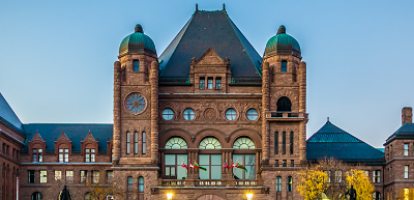From: Livio Di Matteo and Colin Busby
To: Ministers of Finance and Health Canada
Date: July 20, 2016
Re: Why Ottawa Should Resist Provincial Calls for More Health Dollars
High on the agenda of this week’s premiers meeting in Whitehorse is whether to demand more federal cash in negotiations over a new health accord. The prior 2004 health accord delivered federal health transfer growth of 6 percent annually, whereas the previous and current federal government has signalled that future transfers will not be as generous. Ottawa should dig in its heels.
A more generous health transfer agreement has the potential to spark rapid increases in healthcare spending and take the pressure off provinces grappling with difficult reforms opposed by groups protecting the status quo.
Although the provinces have done well restraining health spending in the last few years, it is not clear that publicly-funded health systems have achieved lasting efficiency gains by “bending the healthcare cost curve.” After all, we have seen a similar narrative before: in the mid-1990s, there were four years of declining per person health spending that were followed by a lengthy period of rapid growth.
There are a number of reasons that suggest the current period of restraint may be temporary. Provinces have relied heavily on deferring capital spending to restrain health costs in recent years – but capital reinvestment can only be put off for so long. Plus, there are new cost pressures from “nichebusting” drugs and a large number of medical school graduates entering the health system each year.
In an upcoming C.D. Howe Institute report, we investigate the drivers of provincial health spending and we find that, not surprisingly, more government revenues are a significant cause for new spending. However, not all revenues are the same: revenues in the form of cash transfers from the federal government have a much stronger impact on provincial health spending than the taxes that provinces collect themselves.
Given evidence that federal transfers are a strong driver of provincial health spending, a return to something near a 6 percent escalator – the same size as in the 2004 health accord – would likely spark an increase in provincial health spending and deflect efforts to enact broad and lasting reforms. The federal government should instead stick to the formula set by the previous government that would see provincial health transfers grow with the Canadian economy and never fall below 3 percent annually.
When this formula was announced in 2011, the prospects for economic growth were robust and the prospects for a 3 percent floor kicking in seemed unlikely. Under today’s economic climate, with much more subdued future prospects for economic growth, guaranteeing that the health transfer grow by no less than 3 percent annually should be considered generous.
Efforts to control health costs are necessary to improve the long-term financial sustainability of our healthcare systems. If provinces claim a lack of revenues is an issue, then it would be better if they raised the money themselves rather than get a federal bailout. Overly generous transfers would take the pressure off the provinces to enact politically difficult reforms and worsen, rather than help, the long-term financial pressures in healthcare.
Whatever the premiers decide this week in Whitehorse, Ottawa should hold its ground.
Livio Di Matteo is Professor of Economics at Lakehead University and Colin Busby is Associate Director, Research, at the C.D. Howe Institute.
To send a comment or leave feedback, click here.





